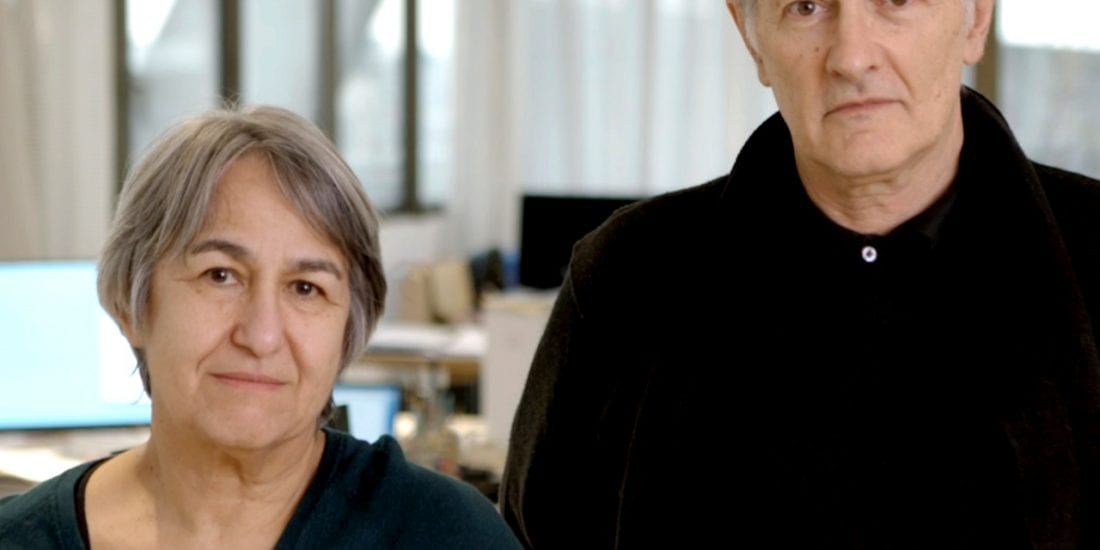The Skew House
A house set amongst the picturesque rubber plantation in Kerala makes ample use of the surrounding, creating a space that seems to embrace nature without forfeiting any modern minimalistic features. A masterstroke by a young architect duo, Shabna and Nikhil Mohan of Thought Parallels.
Driving through winding narrow roads in Malappuram district in Kerala, brings us to this site where the Skew House is located, overlooking lush rubber plantation, which is abundantly grown in and around gradual slopes, camouflaging the house from plain view.
Spread over an acre of land is the house which has a modern tropical design amalgamated with traditional architecture. The design of the house utilizes the extents of the plot exceedingly well by having spread-out planning. The design accommodates the brief of the family which was to create distinctive guest and family spaces. This clearly leads to the formation of two blocks a guest and a family area that are connected with each other by a semi-private living.
“There is a need for a comprehensive investigation of vernacular achitecture to find design solutions for modern spaces.” Shabna and Nikhil Mohan
The firm, Thought Parallels’, ideals are built on its individuality. Nikhil Mohan and Shabna Nikhil, Principal Architect and Creative Director, the duo behind this “boutique firm,” have their feet firmly placed on the ground. “It is not a colossal practice,” says Shabna and call their firm, “a boutique firm with an ability to be innovative and equipped to design and supervise construction anywhere in the world.”
Thought Parallels architecture is noted for discerning and humane design, ranging from modest to large houses, boutique hotels, art galleries, experience centers, commercial, religious and corporate buildings.
“In Kerala, we do often find these plots blessed with beautiful lush verdant landscapes. It was indeed a conscious decision to build it hugging nature,” says Nikhil, as if that is the most natural thing to do, which of course it is, though some architects do not take this usual course of action.
“We view sustainable design as the right thing to do ethically, but also as an opportunity to make a richer, more powerful architecture,” believe the architects.
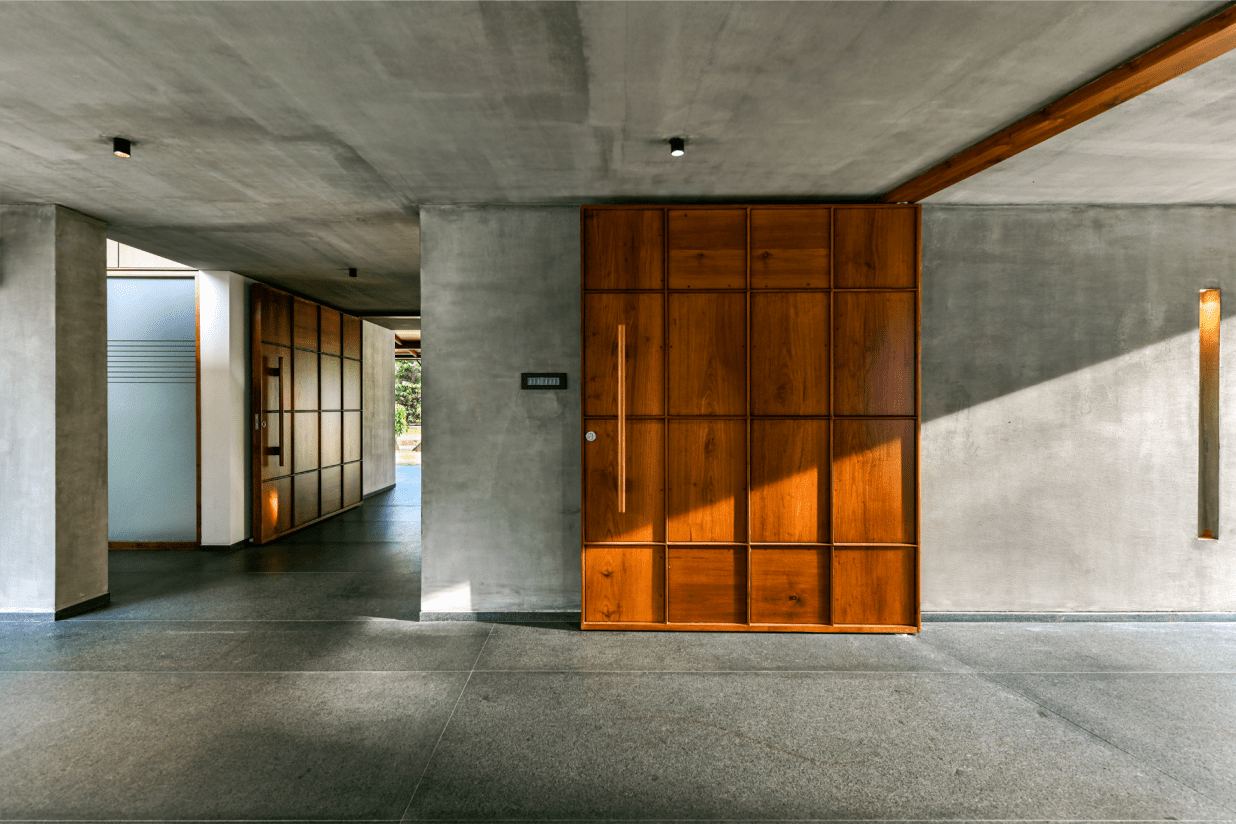 “We are engaged in climate responsive design for comfortable living in different climates. There is a need for a comprehensive investigation of Vernacular Architecture to find design solutions for modern spaces,” says Nikhil.
“We are engaged in climate responsive design for comfortable living in different climates. There is a need for a comprehensive investigation of Vernacular Architecture to find design solutions for modern spaces,” says Nikhil.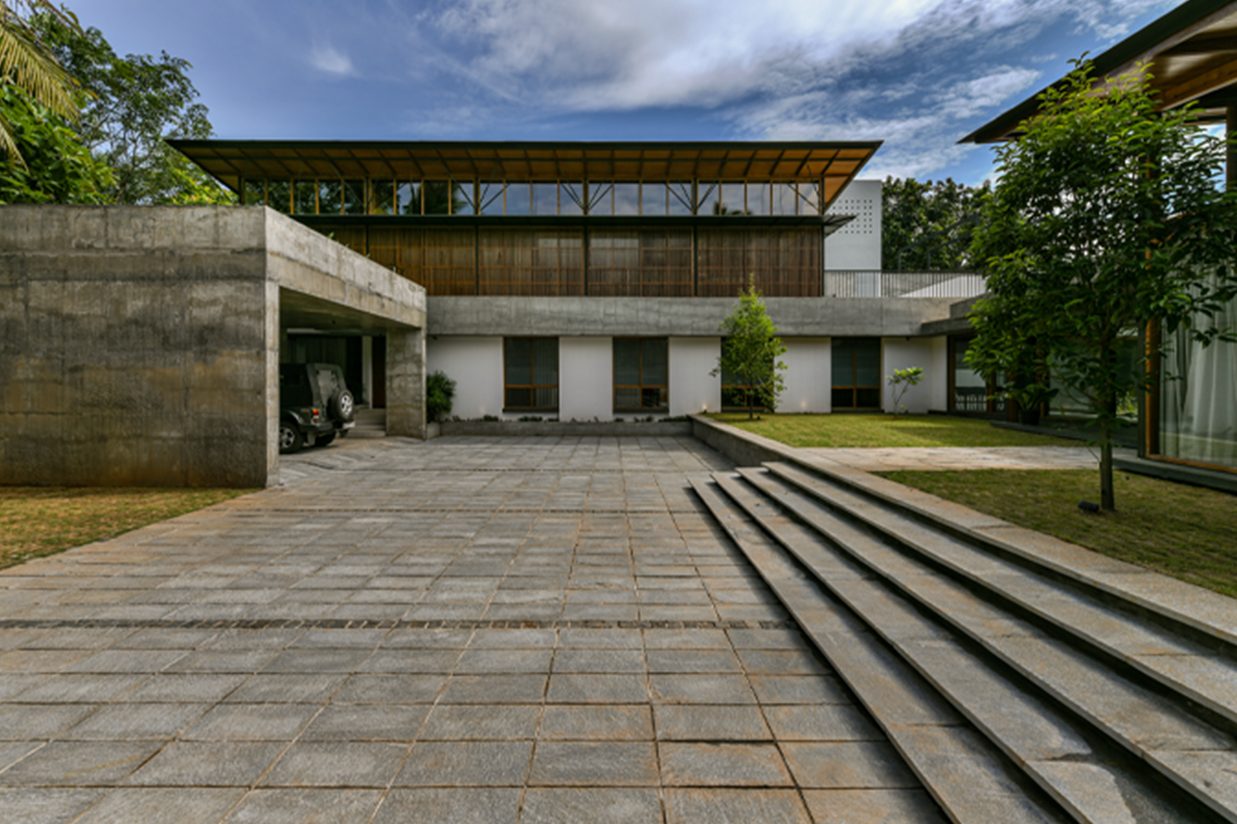
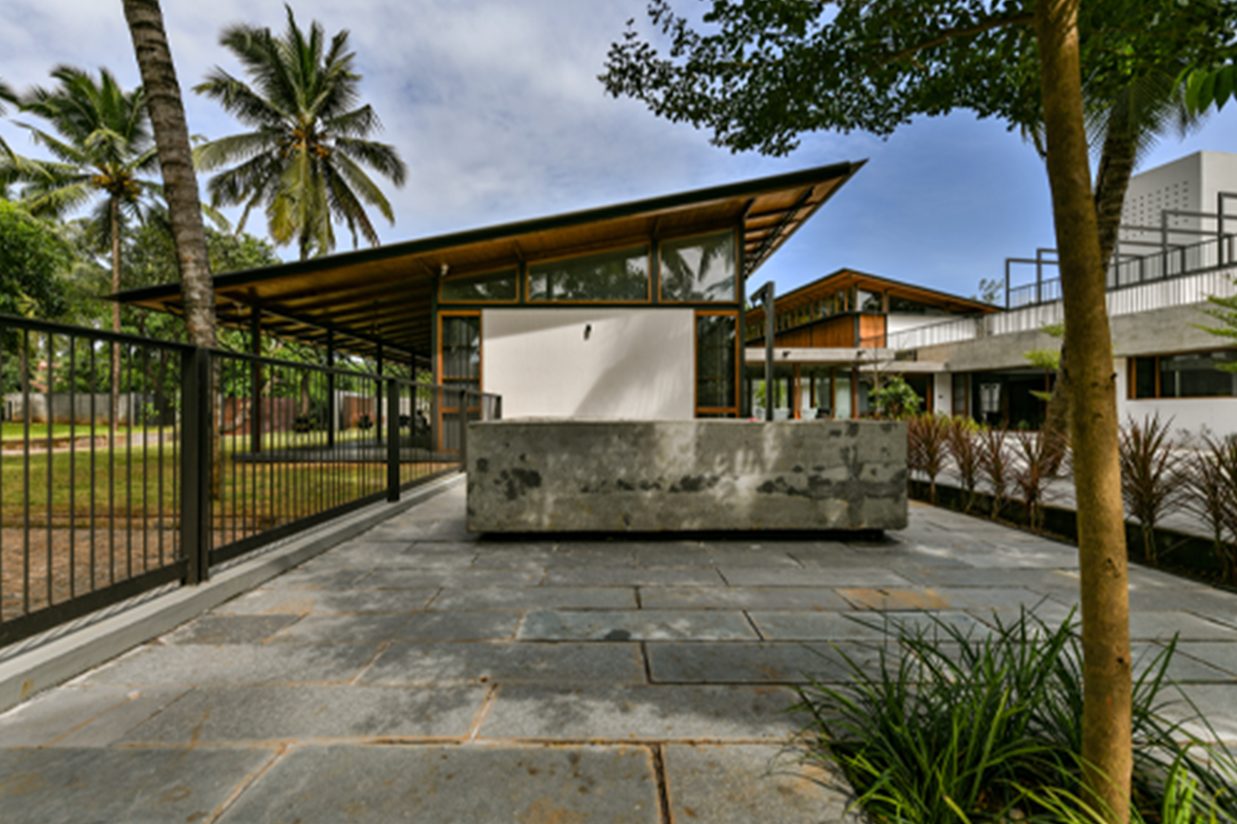
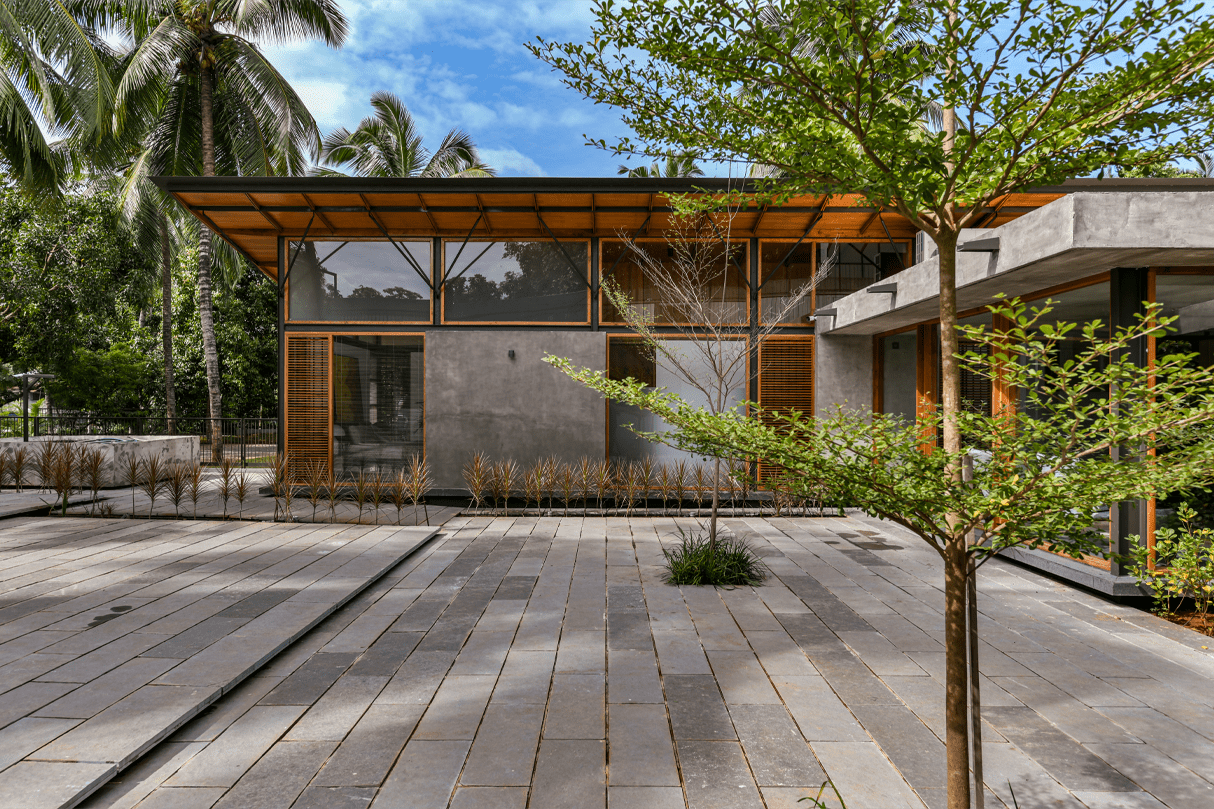
The Skew House spreads out and opens itself to nature, set at a particular angle that also seems to call out to nature and sunlight to seep into the interiors.
“As you rightly pointed out there is ample light and ventilation throughout the house due to the spread-out open plan,” says Nikhil, explaining how they arrived at this spread out a plan for the house, “It also renders a lot of visual connectivity to the surrounding landscape. In its essence, the concept evokes a sense of being rooted in nature.”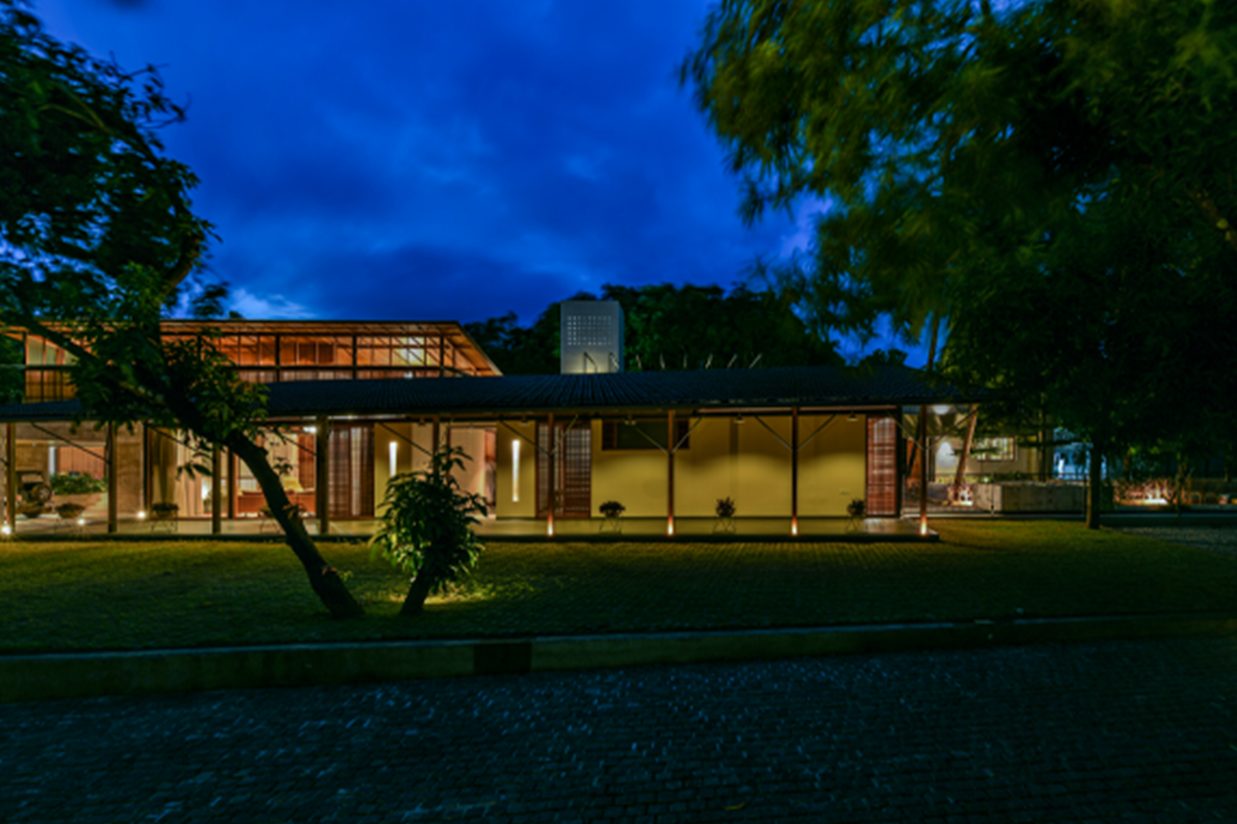
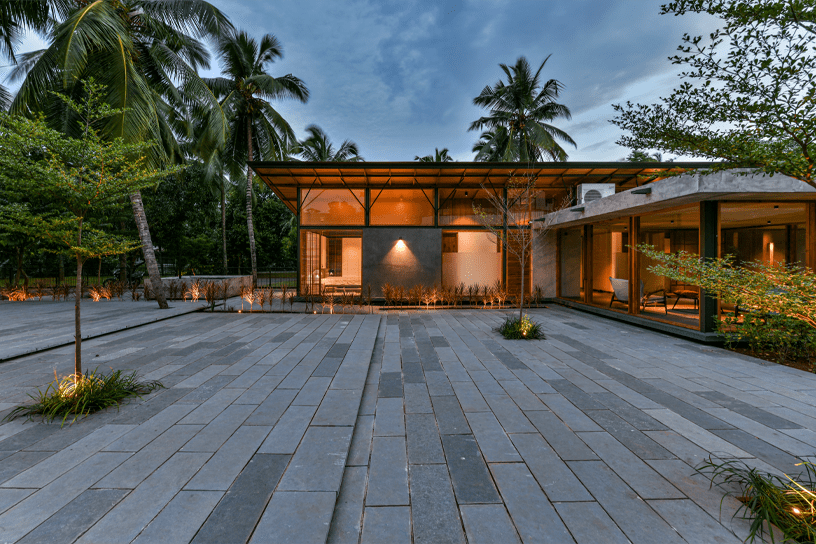
Explaining the orientation of the building, he says, “Primarily the building is oriented longitudinally to the east-west cardinal direction. but the formal living and prayer room is oriented to the Qibla – the traditional direction of prayer thus giving rise to the askew plan, which lends the house a distinctive and dynamic aesthetics.”
The guest block houses a guest living, a prayer room and a guest bedroom arranged in a linear form. The presence of the prayer room prompted the architects to align the block along the traditional direction of pray, thus creating a tilt and breaking the initial parallel axis between the two blocks, hence deriving the name “The Skew House”.
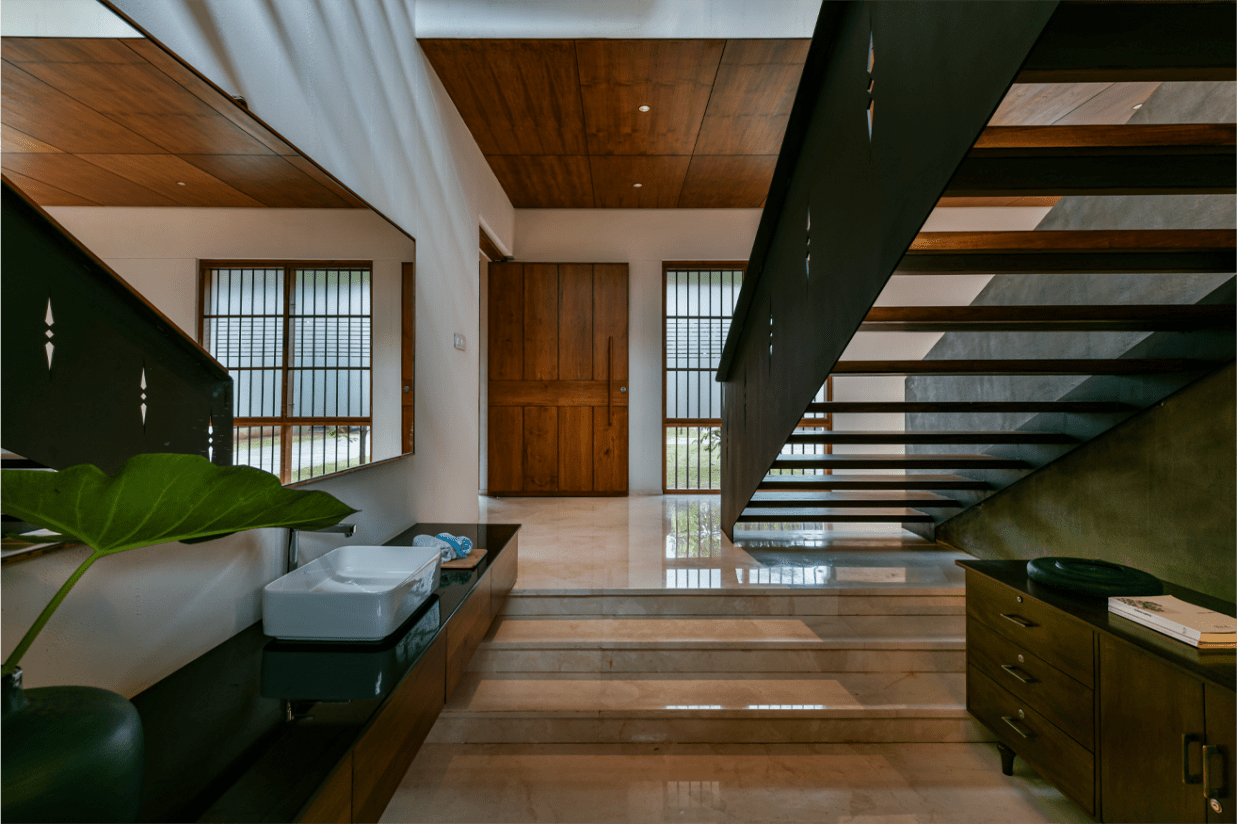
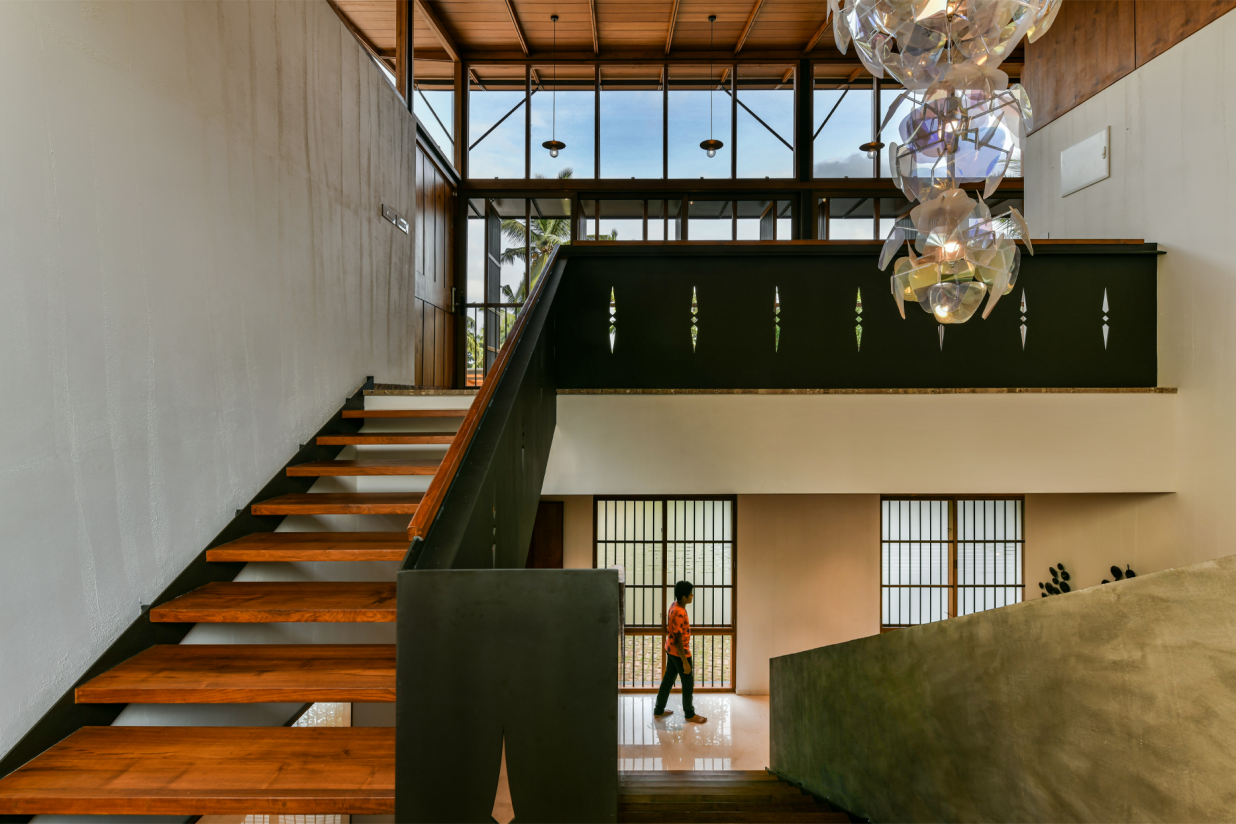 Views of the minimalistic horticulture combining both hard and soft paving around the house from every room is another dimension added to the design. Rooms are well-lit and aerated with large open spaces around. The subtle slope of the traditional styled Mangalore tile roof makes the entrance verandah and inner spaces well-proportioned in terms of height. The connecting semi-private living is a cozy space with doorways leading into the landscape on either side.
Views of the minimalistic horticulture combining both hard and soft paving around the house from every room is another dimension added to the design. Rooms are well-lit and aerated with large open spaces around. The subtle slope of the traditional styled Mangalore tile roof makes the entrance verandah and inner spaces well-proportioned in terms of height. The connecting semi-private living is a cozy space with doorways leading into the landscape on either side.
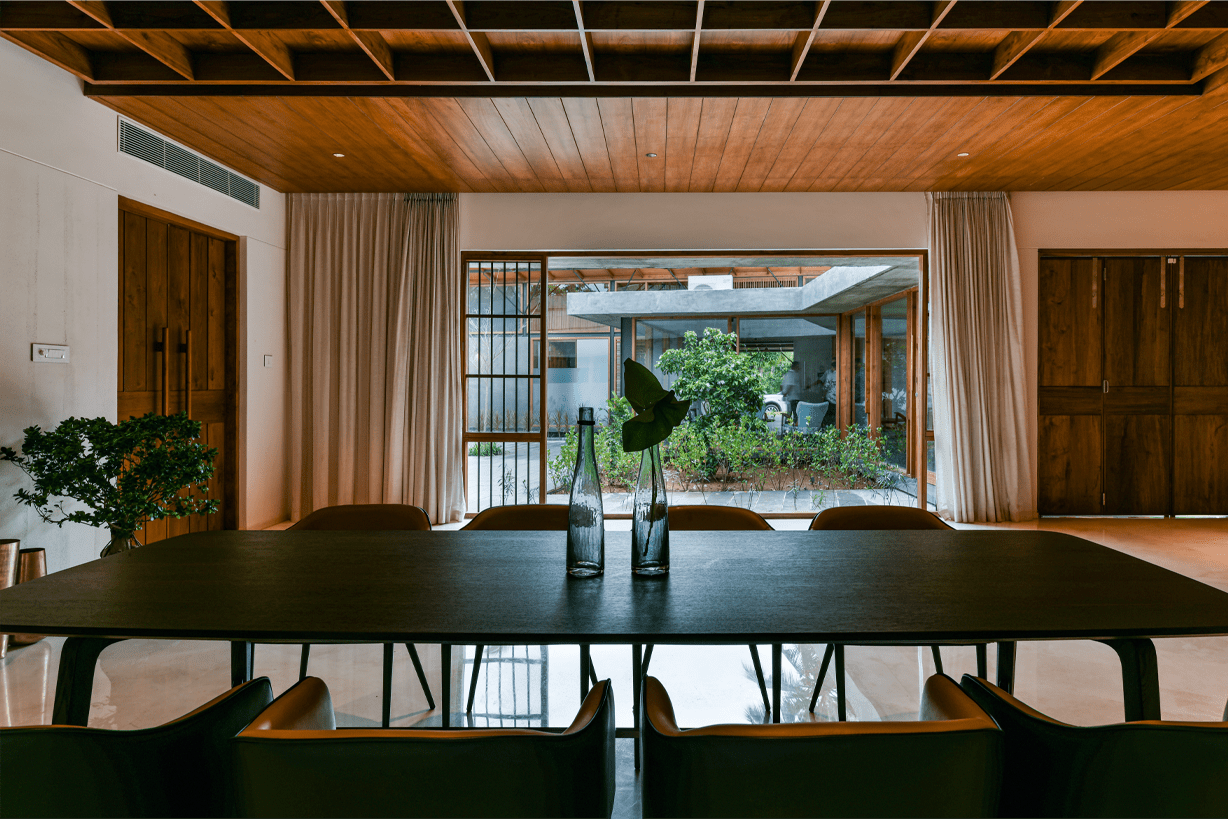
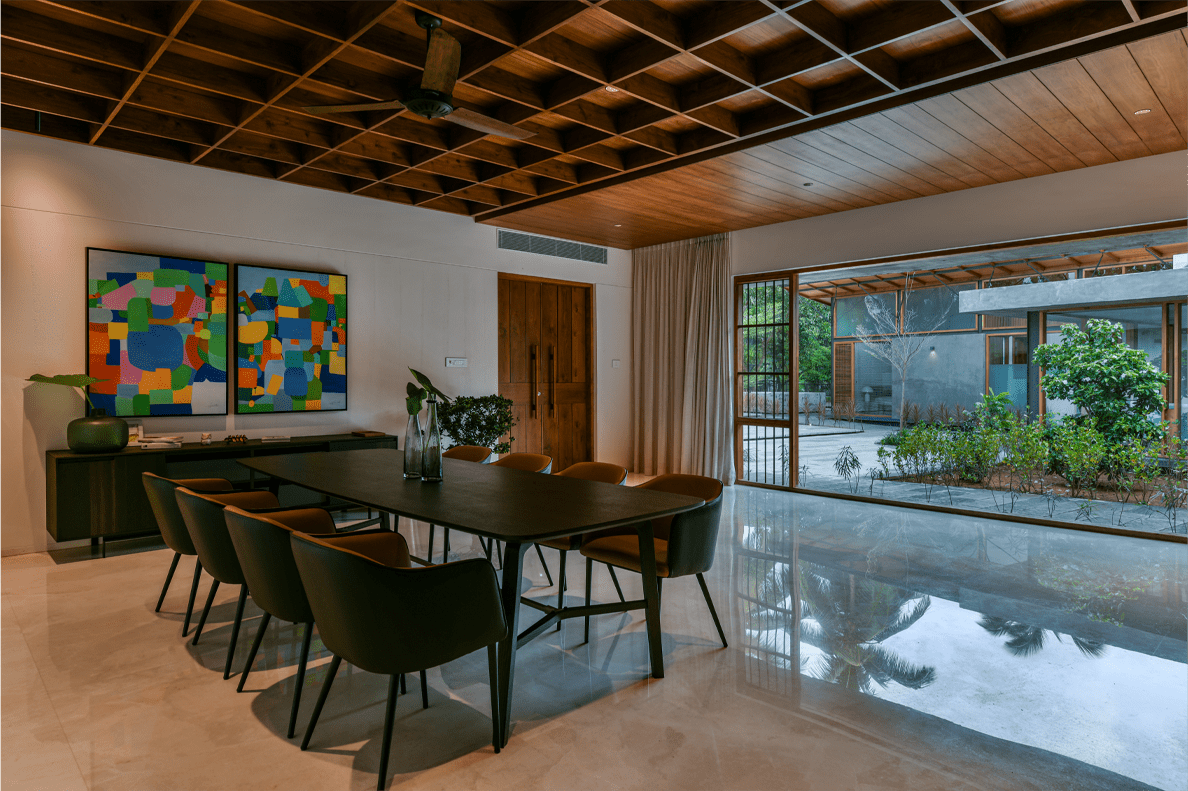 On entering the family block through the connecting semi-private living, one is welcomed by a large living and dining. The linear arrangement of spaces continues with the placing of the staircase followed by two bedrooms on one side and a kitchen and other utility spaces on the opposite end. The linearity in the arrangement of spaces brings in natural illumination and ventilation.
On entering the family block through the connecting semi-private living, one is welcomed by a large living and dining. The linear arrangement of spaces continues with the placing of the staircase followed by two bedrooms on one side and a kitchen and other utility spaces on the opposite end. The linearity in the arrangement of spaces brings in natural illumination and ventilation.
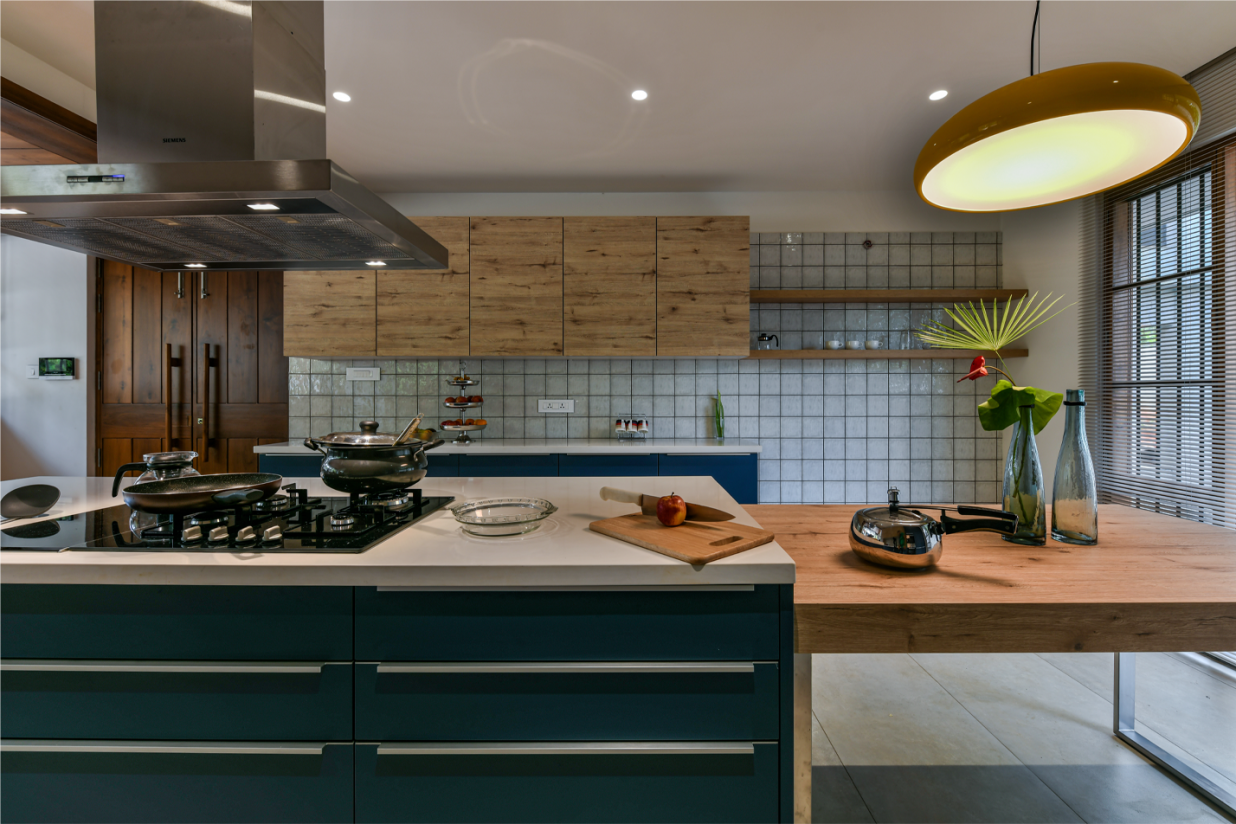 Wooden, steel, and exposed concrete, open riser staircase leads upwards to the first floor. An element by itself, the staircase has a steel railing with a traditional wood carving pattern cut into it which is a subtle but impactful addition. Located on the first floor are two bedrooms and a linear pool.
Wooden, steel, and exposed concrete, open riser staircase leads upwards to the first floor. An element by itself, the staircase has a steel railing with a traditional wood carving pattern cut into it which is a subtle but impactful addition. Located on the first floor are two bedrooms and a linear pool.
The south-facing facade of the bedroom and corridor leading to the bedrooms have been adorned by louvered openable shutters to keep out the harsh glare and heat from the south but creating a dramatic play of light all along the corridor and bedroom floor and walls.
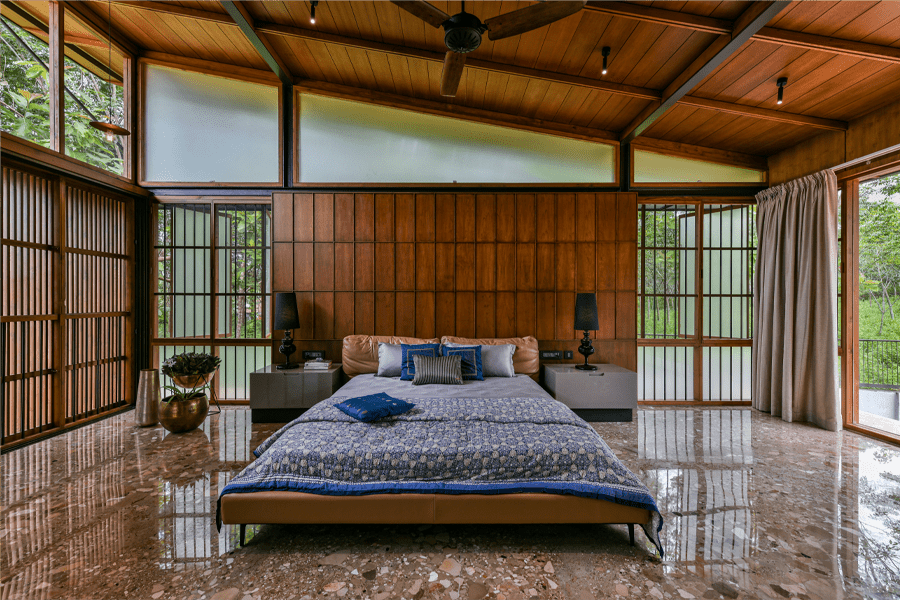
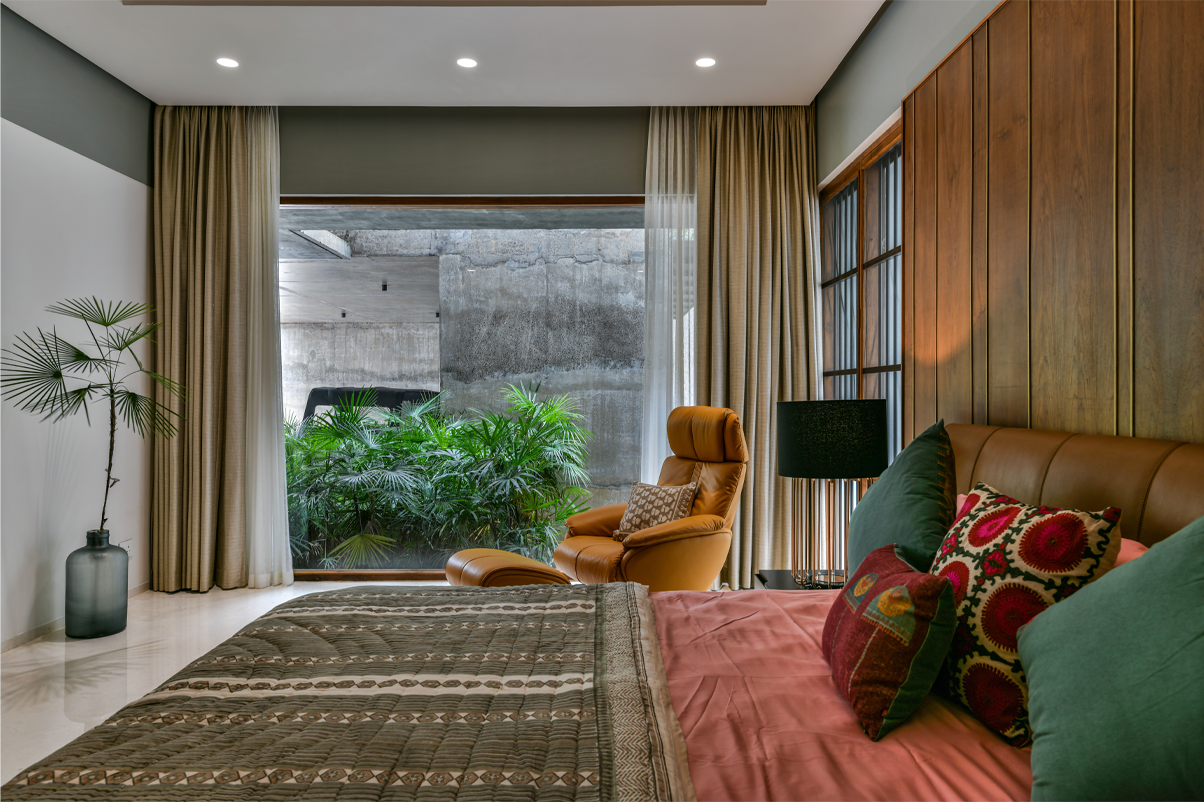 The use of traditional Mangalore roof tile roof along with an inner lining of plywood helps in insulating the rooms from the harsh summer heat.
The use of traditional Mangalore roof tile roof along with an inner lining of plywood helps in insulating the rooms from the harsh summer heat.
“The material pallet has been kept very minimal with steel, wood and exposed concrete as the primary materials. Few elements such as exposed clay brick walls and natural mosaic marble flooring add value to the quality of spaces,” explains Shabna.
The minimalistic layout and furniture spread out in the space make the house distinctive while being inviting. Art and artifacts fit into the space seamlessly, not shouting out their presence but gently functional and attractive by its presence. Right from the flooring to the staircase everything in the Skew House is for a purpose. A purpose that the architects have creatively translated from the client’s requirement. A house that is pleasing to live in.
Completion Year: 2018
Gross Built Area: 12,000 square feet built-up area in a 1-acre plot
Project Location: Kerala, India.
Photo credits: Prashant Bhat Photography
Photographer’s website: www.facebook.com/Prashbhat


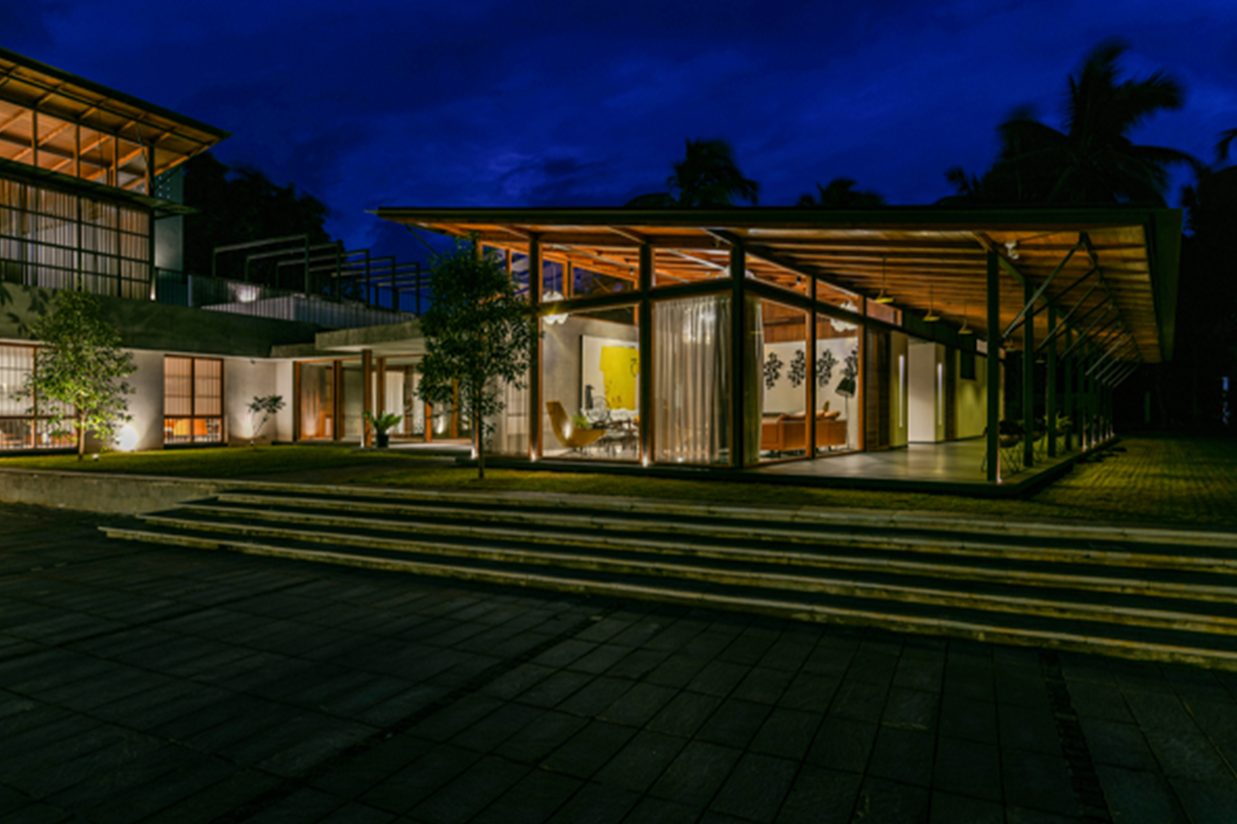
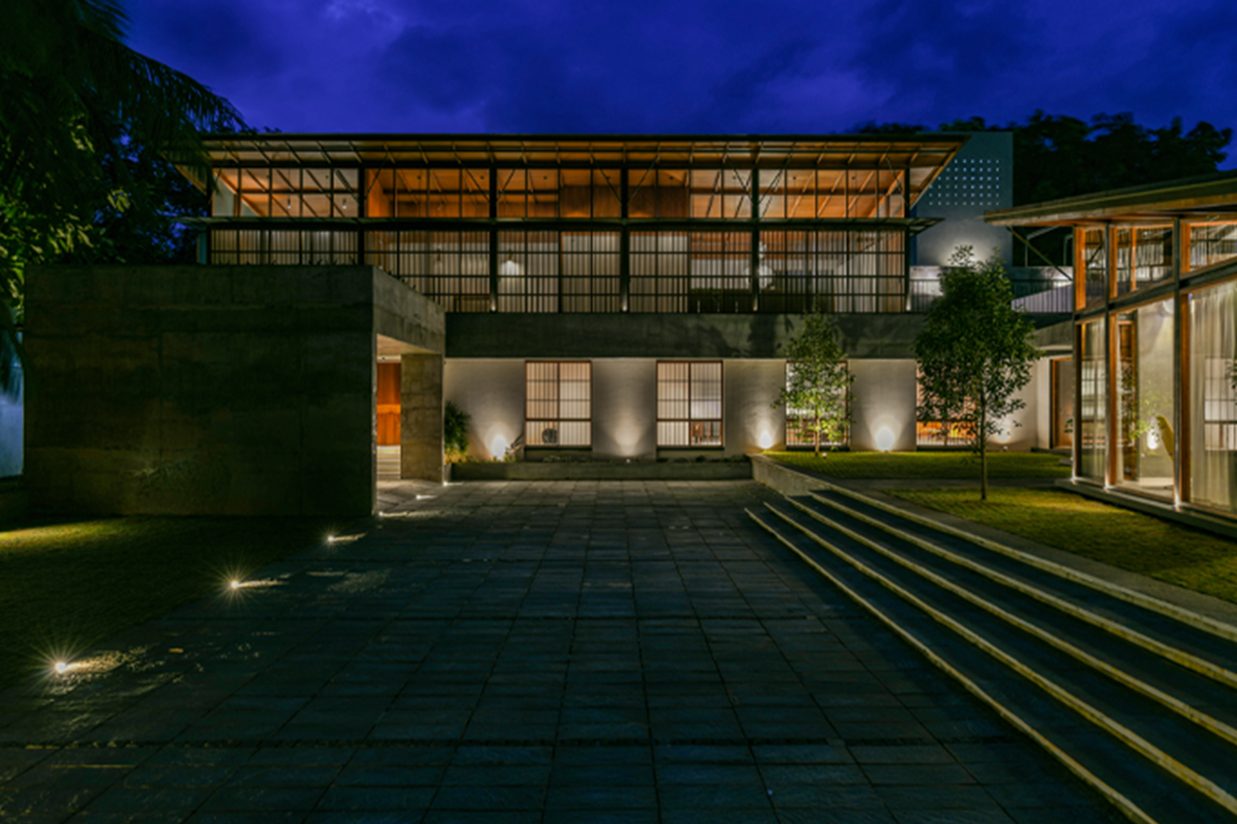
 “There is a need for a comprehensive investigation of vernacular achitecture to find design solutions for modern spaces.” Shabna and Nikhil Mohan
“There is a need for a comprehensive investigation of vernacular achitecture to find design solutions for modern spaces.” Shabna and Nikhil Mohan








